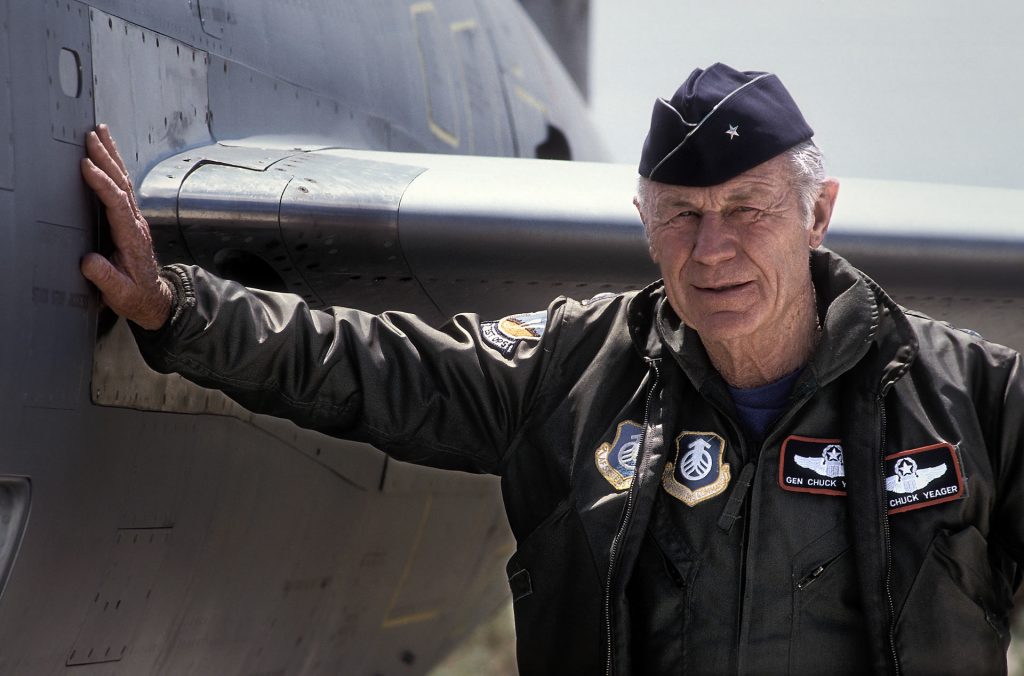
When Chuck Yeager proved humans could fly faster than the speed of sound, he emphasized his point by generating a boom so loud over the Mojave Desert that no one on the ground that October day in 1947 could doubt his achievement.
But with other achievements, Yeager is much quieter, displaying a humility one hopes for in their American heroes. Take, for example, the recent decision by the California State University system to confer an honorary Doctor of Science degree upon the most famous test pilot in history.
“He just gave me this big old special smile he has,” said Victoria Yeager, recalling her husband’s reaction to the news. “When he gets one like this, especially if it has to do with education, it’s meaningful for him.”
Cal State Bakersfield will present the general with the honor at the university’s New Student Convocation virtual ceremony Aug. 23. CSUB made the formal nomination for the Doctor of Science degree in recognition of Yeager’s valor during World War II and his daring race across the sky 73 years ago that ushered in the era of manned spaceflight and transformed the Kern County desert into an incubator for imagination and discovery.
“General Yeager exemplifies everything that is trailblazing and thrilling about the American spirit,” said CSUB President Lynnette Zelezny. “He came from humble beginnings, but through tenacity, courage, curiosity and belief in himself, he expanded the human understanding of what is possible. General Yeager is a hero in our country, but particularly here in our region, where his example of testing the limits still inspires our students and community.”
Brig. Gen. Ernest J. Teichert III, the U.S. Air Force commander at Edwards Air Force Base, supported the nomination of Yeager in a letter to the CSU.
“The 412 Test Wing proudly recognizes the noteworthy accomplishments of Brigadier General Charles E. Yeager, U.S. Air Force, Retired, and his innumerable contributions to the advancement of aeronautic science. … General Yeager shattered several speed and altitude records throughout his decades in the air, making not only the first official breaking of the sound barrier in the skies over Kern County, but ultimately achieving 2.44 times the speed of sound.”
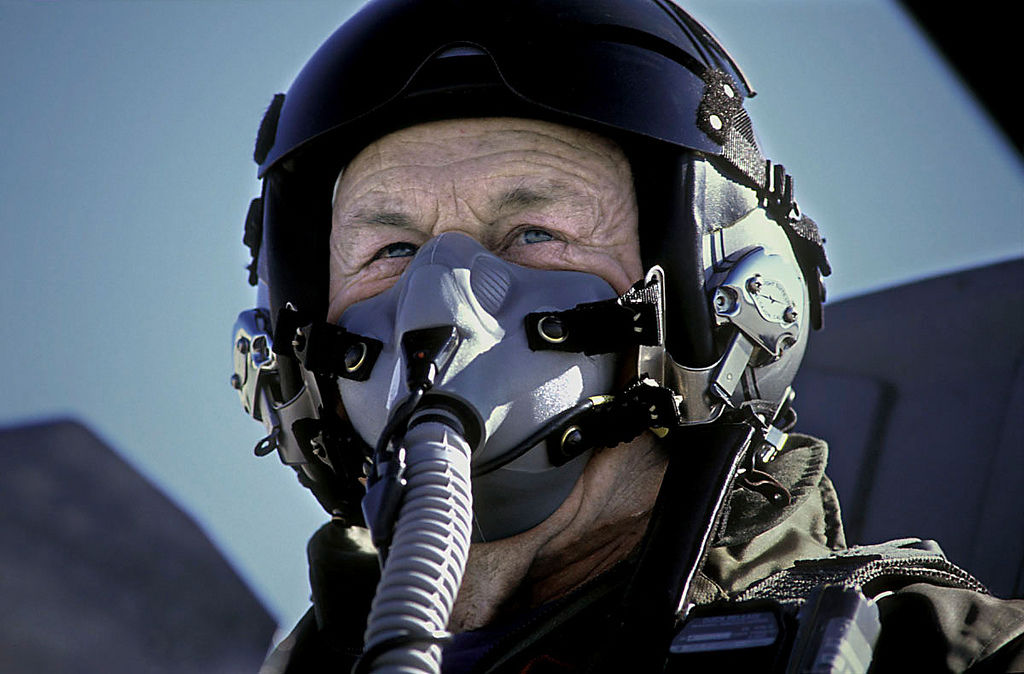
The Yeagers appreciate the warm sentiments, Mrs. Yeager said during a recent interview, but her husband can’t help but question all the fuss, wondering why he’s still the object of attention at age 97. In fact, Yeager is so weary of talking about himself that he no longer grants interviews, leaving the honors to his wife, though he does sit beside her and interject a thought or opinion from time to time.
“He is such an icon of flight, and just think,” Mrs. Yeager said. “He almost didn’t even become a pilot. When I asked him why he signed up for the Army Air Corps, he said they probably had a better recruiter than the Navy guy. And he also saw that pilots didn’t have dirty fingernails and had good-looking girls on their arms.”
‘WHATEVER HE WAS GOING TO DO, HE WAS GOING TO MAKE HIS MARK’
Charles Elwood “Chuck” Yeager was born Feb. 13, 1923, in West Virginia, in the heart of Appalachia. He displayed an early knack for anything mechanical and developed a lifelong love of the outdoors.
“When he was growing up, he didn’t know there was a Depression,” Mrs. Yeager said. “Being poor was nothing new to them.
“He knew he needed to get out of West Virginia because there was nothing there for him. Whatever he was going to do, he was going to make his mark somehow. That’s his nature.”
And, in 1941, at age 18, Yeager would have the chance to make his mark in the defining moment of his generation: World War II. Enlisting in the Army Air Corps as a mechanic, Yeager seized the opportunity to train as a pilot after the Air Corps lowered the minimum age and no longer required candidates have college degrees.
“He applied for training and the pilot said, ‘You want to go up for a ride?’ He said ‘OK’ and threw up all over the airplane,” Mrs. Yeager said. “But it was mind over matter, and he wasn’t going to be a quitter. And that’s how he became a pilot.”
Yeager was shot down over France on his fifth combat mission in 1944 but evaded capture with the help of the French Resistance and returned to England. Fierce in dogfights, he racked up at least 12.5 aerial victories during his 64 combat missions.
Returning to the States in 1945, he married Glennis Faye Dickhouse, whose name graced most of the aircraft he piloted over his storied career, including the X-1 that made history.
THEY STARTED TALKING ABOUT THE ‘SONIC WALL’ OR ‘THE SOUND BARRIER’
In September 1945, Yeager made his first trip to the massive dry lakebeds of Muroc Army Air Field (now Edwards Air Force Base), at the time a primitive, desolate testing ground in close proximity to Southern California, where the aviation industry was headquartered.
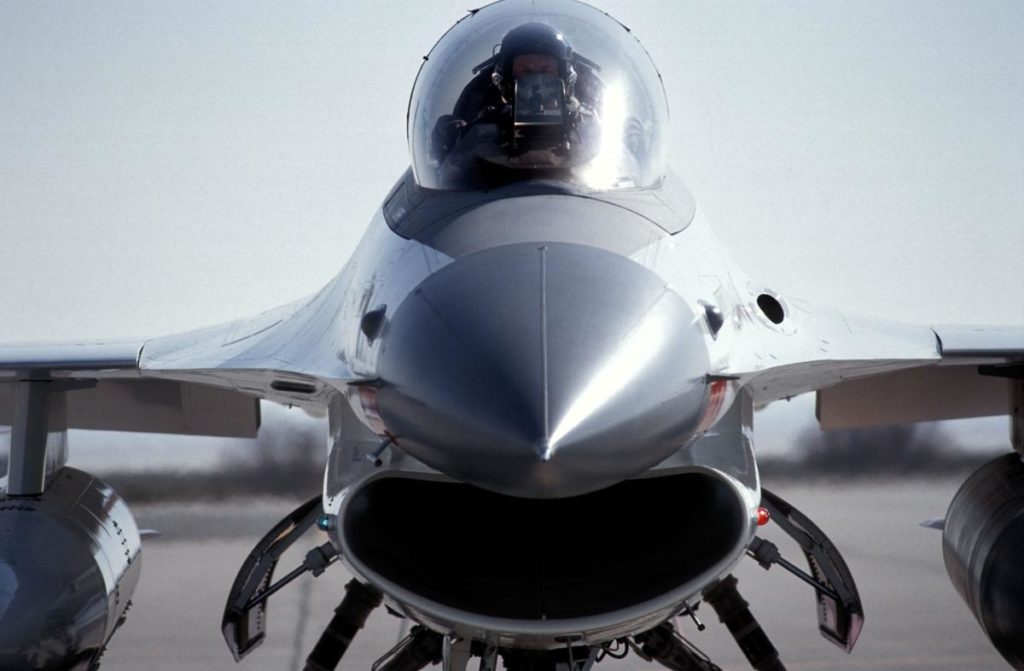
Leading up to that fateful day in 1947, the United States — during the height of the Cold War — was in a neck-and-neck race with the Soviet Union and even its own allies to achieve as many strategic and scientific firsts as possible. Breaking Mach 1, or the sound barrier, was among the most coveted prizes in the race — and potentially the most deadly.
Tom Wolfe described the danger in his book “The Right Stuff,” which features Yeager’s famous flight:
“Pilots who approached the speed of sound in dives reported that the controls would lock or freeze or even alter their normal functions. Pilots had crashed and died because they couldn’t budge the stick. … This led engineers to speculate that the shock waves became so severe and unpredictable at Mach 1, no aircraft could survive them. They started talking about ‘the sonic wall’ and ‘the sound barrier.’”
“Up until the flight before he broke the sound barrier, everyone thought it wouldn’t happen and that he would blow into a million pieces,” Mrs. Yeager said.
And then came Flight No. 9.
Oct. 14 couldn’t have dawned any worse for Yeager. Suffering from two broken ribs — a bit of information he kept secret from his superiors — Yeager could barely use his arm, so he closed the hatch of the cramped X-1 cockpit with the help of a broom handle.
The test pilot and the X-1 were dropped from the belly of a B-29 some 26,000 feet in the heavens above the desert. Activating the four rockets of his engine, Yeager was pinned to the back of his seat and struggled to move his hands forward to reach the controls. As he climbed and gained speed, the shaking and buffeting were intense. The needle on his instrument panel registered 0.96, fluctuated and then went off the scale.
And then, just as Yeager predicted, stability improved as he roared beyond Mach 1. The shaking stopped. He was in total control as he streaked across the sky and into posterity, moving faster than any human ever had.
At Muroc Field, the evidence of Yeager’s successful flight thundered overhead: The sound barrier had been broken.
“He landed and everybody was slapping him on the back,” Mrs. Yeager said. “His feeling was he had a sense of accomplishment.
“A lot of people thought about history. He just thought it would be a neat airplane to fly.”
From that day — when Yeager touched the upper reaches of the atmosphere, glimpsing the possibilities of spaceflight — eastern Kern County would become the center of the universe for aerospace testing. Legions of brave pilots and brilliant engineers have built a culture of imagination and ingenuity at Edwards Air Force Base.
One such Air Force test pilot who was inspired by Yeager’s achievements was CSUB President Zelezny’s father, an aerospace engineer for many of the Apollo missions during the race to space. His meeting with Yeager was memorialized in an autographed photo that has become a family treasure.
“This is an incredibly moving moment in our family,” Zelezny said. “Honoring General Yeager makes me feel closer to my own father. But all Americans should be proud of the legacy the Greatest Generation leaves for us — and the challenge to carry on their code of honor and stunning accomplishments.”
THE GENERAL TODAY: STILL BREAKING BOUNDARIES
You’d never know Yeager is 97 from the schedule he keeps: He and his wife travel regularly and he exercises more than most men half his age. He has lost some hearing, which started early, a casualty of no ear protection during the war.
The Yeagers have been married since 2003, following the death of Glennis in 1990, a painful loss for her widower.
“When you lose your spouse of 45 years, that’s like losing your right arm,” Mrs. Yeager said.
Now and then, the Yeagers make it back to Edwards Air Force Base, where the general is a big hit with the new generation of test pilots. The last time Yeager piloted a supersonic aircraft was in 2012, his wife said, though he still flies regularly — as the world’s most overqualified co-pilot.
“General Yeager was a co-pilot Monday,” his wife said. “The general said, ‘Son, why are you moving the stick so much?’ And the pilot gave him the stick, and he was so still. And so the pilot said, ‘Yeah, I learned something.’”
The Yeagers look forward to participating in the virtual CSUB convocation in August and returning to Edwards Air Force Base in October for the Aerospace Valley Air Show. But when the general does return to the place where he made history, he’ll be looking ahead, not back.
“The one thing about General Yeager is, he is always present,” Mrs. Yeager said. “Yesterday doesn’t exist. Tomorrow doesn’t exist. If something’s not there, he’s not going to regret it, mourn it or wish it were.”
Article Source: Jennifer Self is the public information officer at Cal State Bakersfield. She can be reached at jself@csub.edu.


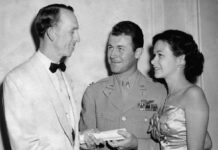
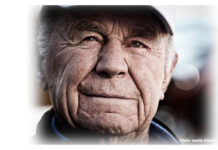

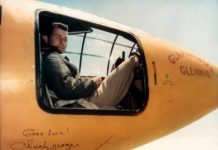
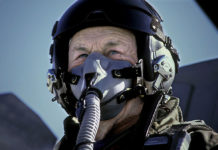









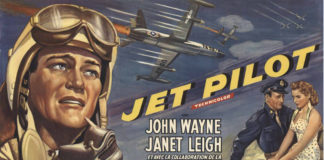
Came into this world October 14 ,truly a special day . Knew Mister Yeager had “the right stuff!